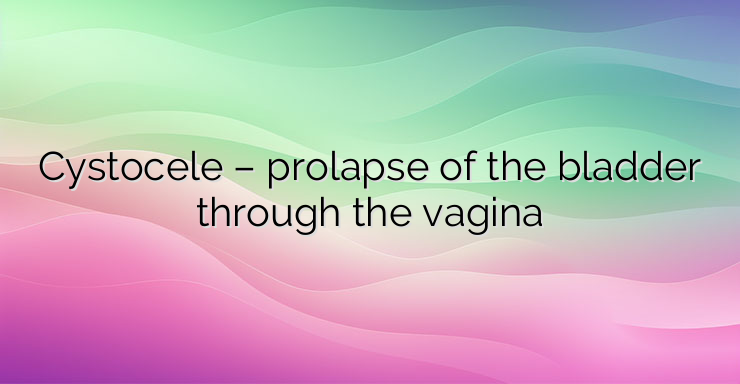Under normal conditions, the muscles and tissues of the pelvic floor hold the bladder and uterus in place and prevent prolapse or migration. When there is an injury, overstretching or weakening of the pelvic floor muscles, conditions are created for bladder segments to prolapse through the vagina. A cystocele is a prolapse of the back wall of the bladder into the vagina, with prolapse of the front wall and very rarely of the uterus. Women over the age of 40 are mostly affected. In general, prolapse is the result of birth trauma with tearing of the pelvic floor muscles. Women who have multiple births or a prolonged and traumatic birth process are more at risk of developing prolapse. Heavy physical work or heavy lifting that weakens the pelvic floor muscles is the second most common cause of prolapse. Less common causes include chronic constipation, chronic cough, and previous pelvic surgery. In severe cases, the prolapsed bladder may appear at the opening of the vagina. The main complaint of female patients is urinary retention when walking, coughing, sneezing and physical work. There is no leakage of urine in the supine position. In other patients, more frequent urination is observed, with imperative manifestations to urinate. Recurrent urinary tract infections are also common in these cases. Often, patients report a feeling of vaginal bulging. Actually, the part of the bladder that is displaced in the vaginal cavity creates an unpleasant feeling of swelling in it. Pain in the vagina, pelvis, lower abdomen, or groin is sometimes reported. The diagnosis of the disease is easy when the patient’s complaints and physical examination are taken into account. Cystoscopy revealed loosening of the bladder neck, hyperemic mucosa and prolapse of the posterior bladder wall. Cystography, performed with the patient in a vertical position, shows that the floor of the bladder has lost its normal support and lies lower than the pubic joint. Treatment of the condition can be conservative and operative and is guided by the patient’s complaints. In cases where the cystocele does not cause subjective complaints and is not associated with complications, no treatment is required. Behavioral therapy includes a range of ways to control the problem. Kegel exercises to strengthen the pelvic floor muscles are particularly helpful in some patients. The use of pelvic floor physiotherapy or the placement of a pessary to support the vagina and prevent bladder prolapse is helpful. In severe cases of cystocele and prolapse of a significant part of the bladder, surgical treatment is the definitive solution to the problem. The technique includes colporrhaphy, which makes it possible to strengthen the pelvic floor and thus restore normal micturition.Untreated cases can progress to urinary retention or permanent damage to kidney function, which is a reason not to underestimate the problem. References: Urology – Prof. P. Panchev


Leave a Reply